Story by Brandes Elitch
Photos courtesy The World of Speed Museum, Wilsonville, Oregon
Recently I was able to visit the World of Speed Museum, and then spend an hour speaking with curator Ron Huegli. If you are visiting the Portland area, you will want to put this on your itinerary. Here is a brief overview.
The museum opened its doors in April, 2015. It was founded by David Bany and his wife Sally. Unfortunately, David Bany died prematurely of cancer at age 59, but his vision of an educational motorsports museum with exhibits, youth programs, and an extensive motorsports archive survives. Bany saw that local high schools had closed their auto shop programs, and he wanted to educate high school students in automotive repair and technology. Currently, nine local high schools participate in the program, which is like a class period, and gives students accreditation. Clackamas Community College instructors teach a formal curriculum, which covers car diagnostics, repairs, engine rebuilding, and other skills. There is also a learning center which hosts summer and winter break camps, with a variety of STEM (Science, Technology, Engineering and Math) classes. When I was there, Allen Osborne, an ASE Master Technician and WTI Technical Training Instructor, gave a class from 8 am to 5 pm on High Performance Engine Theory and Design, which included eleven subjects, such as “common tricks of high performance tuning,” and “turbocharging.” If I was not on a tight schedule, I would have definitely stayed for it.
The Bany family also contributed to the museum archive, which has an extensive array of memorabilia from the Daytona 500, the Indianapolis 500, the Bonneville Speedway, and other raceways, as well as personal material from famous racers.
This is a big museum. The project was not originally of this scale, but a large ex-Dodge dealership became available, and they went for it. There is a lot of community involvement: on the first Saturday of the month, there is a volunteer talk series. The floor hosts a main feature exhibit which rotates annually. My favorite was: “Zero to 1000 mph,” showcasing land speed records (including Mickey Thompson’s famous Challenger I – he was the first American to break the 400 mph barrier). I vividly remember reading about this car in Hot Rod around 1959 – to see it in person after all those years was very exciting. There are three race car simulators. There is a replica of the Daytona Banking Wall, with 4 period NASCAR vehicles. There is a film of the history of the Portland International Speedway, which plays a big role here. Various drag cars and Indy race cars and motorcycles are also featured.
Andy Granatelli
But for me, the absolutely outstanding exhibit is the one called, “Andy Granatelli: A Life in Motorsports.” It is worth the visit just to see this. I watched a fabulous film about the 1969 Indianapolis 500, won by Granatelli, after decades of trying. I have to say that I got a little choked up at the end of the film, and you would too. Ron related to me how the exhibit came about.
Two years ago, Al Unser Sr. and Al Jr. were in town for the S.V.R.A race, and paid the museum a visit to look at the Indy car exhibit. Ron had assembled 33 Indy cars (the size of the grid) on the floor of the museum to honor the 100th anniversary of the Indy 500. Al Sr. was good friends with Vince Granatelli, Andy Granatelli’s son, and had related to Vince how impressed he was with the museum. Vince had most of his father’s collection and was looking for a museum to donate it to. Vince reached out to Ron about the collection to see if there was interest. After a couple of trips to see Vince, the items were packed and donated to the World of Speed. The collection is quite extensive, and Ron and the team at the museum were able to put together an incredible exhibit showcasing his accomplishments in motorsports, including drawings of the Novi cars, Ferguson cars, photos, clothing, and the actual 1948 Indy car.
This encompasses the start at Grancor in 1945 and the early Indy car efforts, to his ownership of Paxton products in the mid-1950’s, his time at Studebaker, and ultimately STP products, and lastly Tune-Up Masters. Andy Granatelli’s accomplishments affected racers and motorsports all over the world. Ron adds, “The American public doesn’t realize the depth of his involvement in motorsports. Yes, he won the Indy 500 as a team owner but not many know that he also tried to qualify for the 500 back in 1948. He was also a very successful land speed racer, setting numerous records, some that still stand today.
 Brandes Elitch’s book about the Lancia Loraymo now on sale!
Brandes Elitch’s book about the Lancia Loraymo now on sale!
At Grancor, Granatelli pioneered the mass merchandising of performance products. In 1958, he purchased a failing engineering firm that made superchargers, Paxton Products. He made it profitable, and sold it to Studebaker, who then asked him to take on an underperforming division called Chemical Compound Corp. This firm had only one product, an oil treatment called STP. Coincidentally, at the same time Andy was experiencing engine failures while racing at Bonneville. He got in touch with Ed Winfield, a notorious recluse, for advice. Winfield responded: “Just use your own product – STP!” Andy took his advice, and that solved the problem! He went on from there to win at Indy as both team owner and constructor in 1969, and then won again in 1973, and in the process STP became a household name.
Portland International Raceway
Another must-see exhibit is a film on the history of the Portland International Raceway. This is a story in itself. It is the only racetrack that is managed by the Parks Department of a major U.S. city. Originally the area was called Vanport. It was shipyard worker housing during the war for the Kaiser steel shipyards in Vancouver, WA with tiny 800 square foot homes for the workers who helped to save democracy. It was built adjacent to the Columbia River. A dike failed in 1948, which caused a catastrophe. The Army Corps of Engineers leveled everything that was still standing and shored up the dike, and the area was abandoned by everybody except the illegal racers who conducted impromptu street races in hot rods, sports cars, and drags. Finally, in 1960 the local Four Cylinder Club of Oregon got together with the Jaycees and the City of Portland to organize a race track, and a race called the Rose Cup. This grew to become one of the largest SCCA races in the entire country, and catapulted PIR into the national spotlight in the seventies. The track was successful as a venue for TransAm, and in 1984, IndyCar came to Portland. At the end of 2007, it was renovated and repaved. In September, 2018, the Grand Prix of Portland Indycar Race returned after an eleven year absence. It is a 268 acre facility, and draws an estimated 350,000 visitors annually.
Every year, Ron works to put together a feature exhibit that is showcased from March to November. Next March 23, a new exhibit at the museum will feature Mario Andretti, certainly one of the very greatest drivers ever. I’m sure I don’t need to profile him for our readers, and it would take a whole column, or more, to do so adequately. He is one of only two Americans to win an F1 championship, and he has won at eleven different formats of racing, including the Daytona 500 and the Indy 500. In 1968, he set a land speed record at Bonneville. I am pretty sure I will be making the long trip (for me, from Sonoma County) to see this exhibit. The following year (2020), Ron is working on a Ferrari exhibit. He is busy at work contacting Ferrari owners to have a truly world-class exhibit on the floor and I have no doubt he will succeed.
Dale LaFollette
Finally, I want to mention a person who has already been profiled here Dale
LaFollette. Dale was the manager of PIR for fully 27 years. Last year, he was honored with an inaugural spot in the Northwest Motorsports Hall of Fame, held at the museum. As the PIR manager, he wasn’t just involved with racing; he was responsible for upwards of 500 “event days” at the facility annually. At the track he was concerned with safety, and he developed a way to build safety walls out of used tires, which is now a common practice. Dale retired in 2000, and since then he has created a business, Vintage MotorPhoto. He was selected to the Nominating Committee of the Motorsports Hall of Fame in Daytona Beach. He is a world authority on authentic , original, period photographs, not reproductions or reprints. These are collector’s items. His columns can also be read in the pages of the new magazine, Automobilia, A Collector’s Resource. Check out his website at: www.vintagemotorphoto.com.
It appears that the legacy of the Bany family is alive and well, thanks to Sally and her two daughters, Ron and his associates, and all the volunteers and docents, who are continuing the mission. The archivist, Katrina O’Brien, has worked to develop a world class facility, and it is open every weekend. As I have written about in the past in my museum series, running a museum is a very challenging task, financially and otherwise. This is true not just for car museums, but for museums in general, and they would welcome your support.
You can find out more at their website.
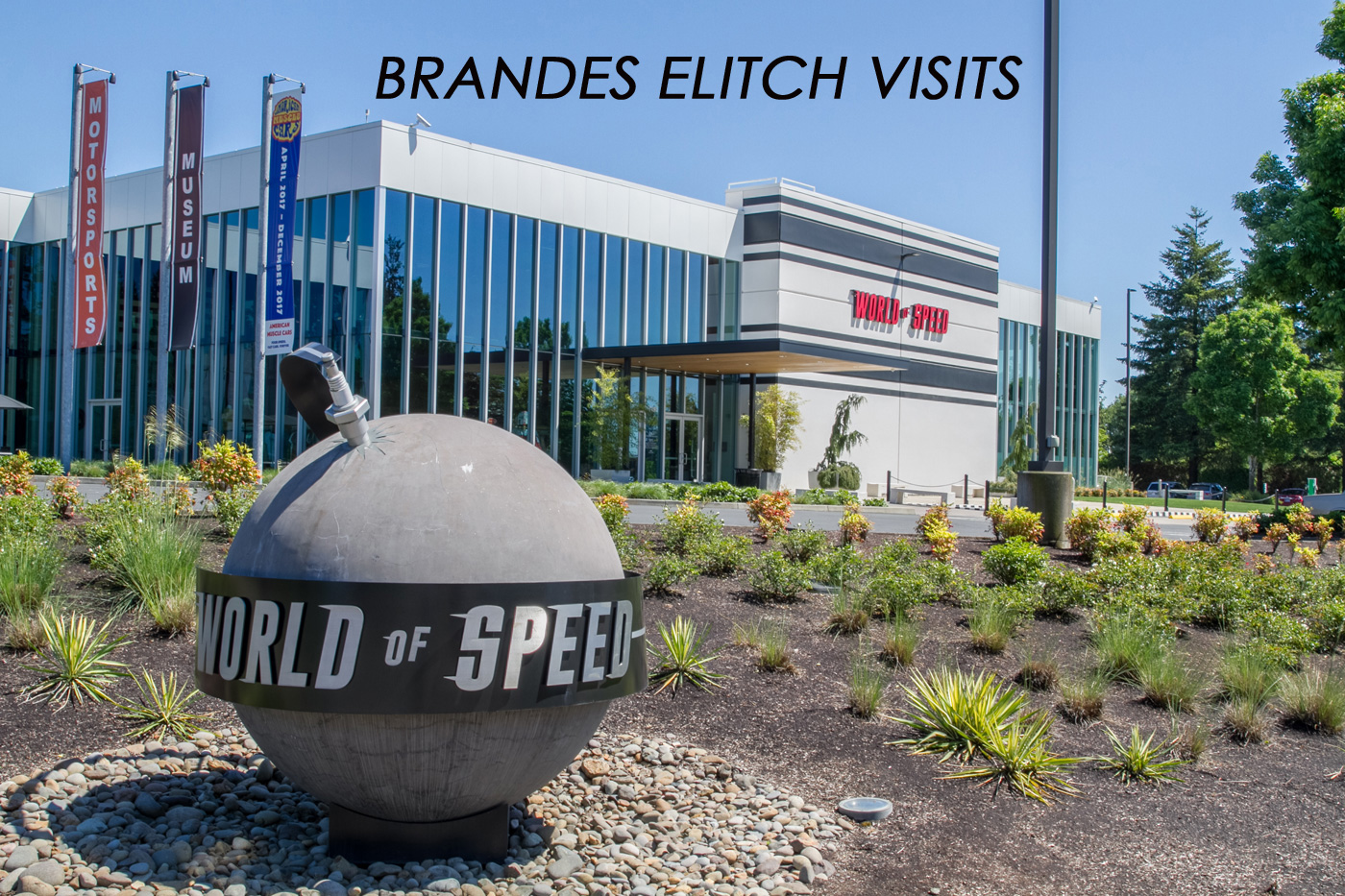
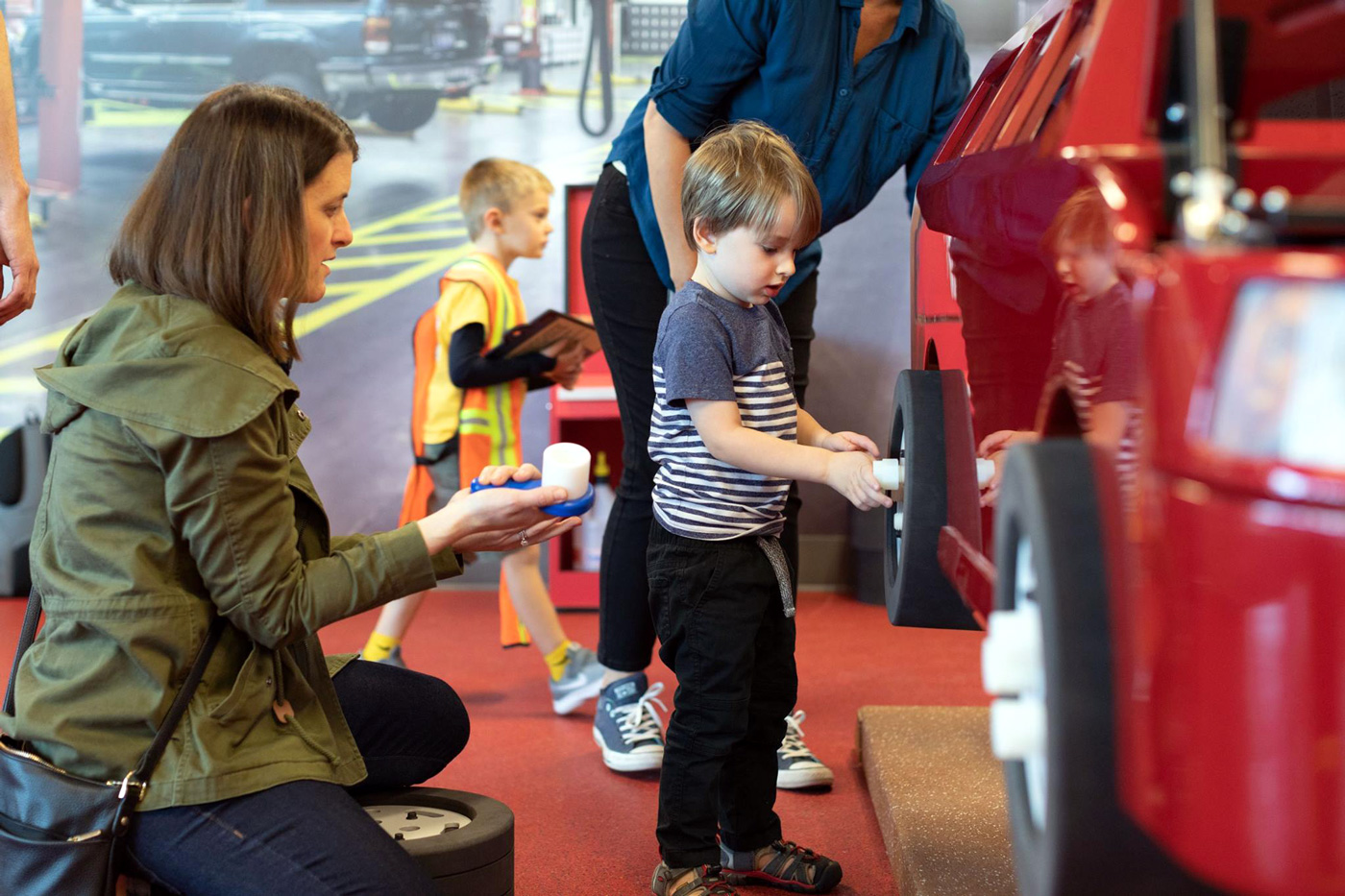
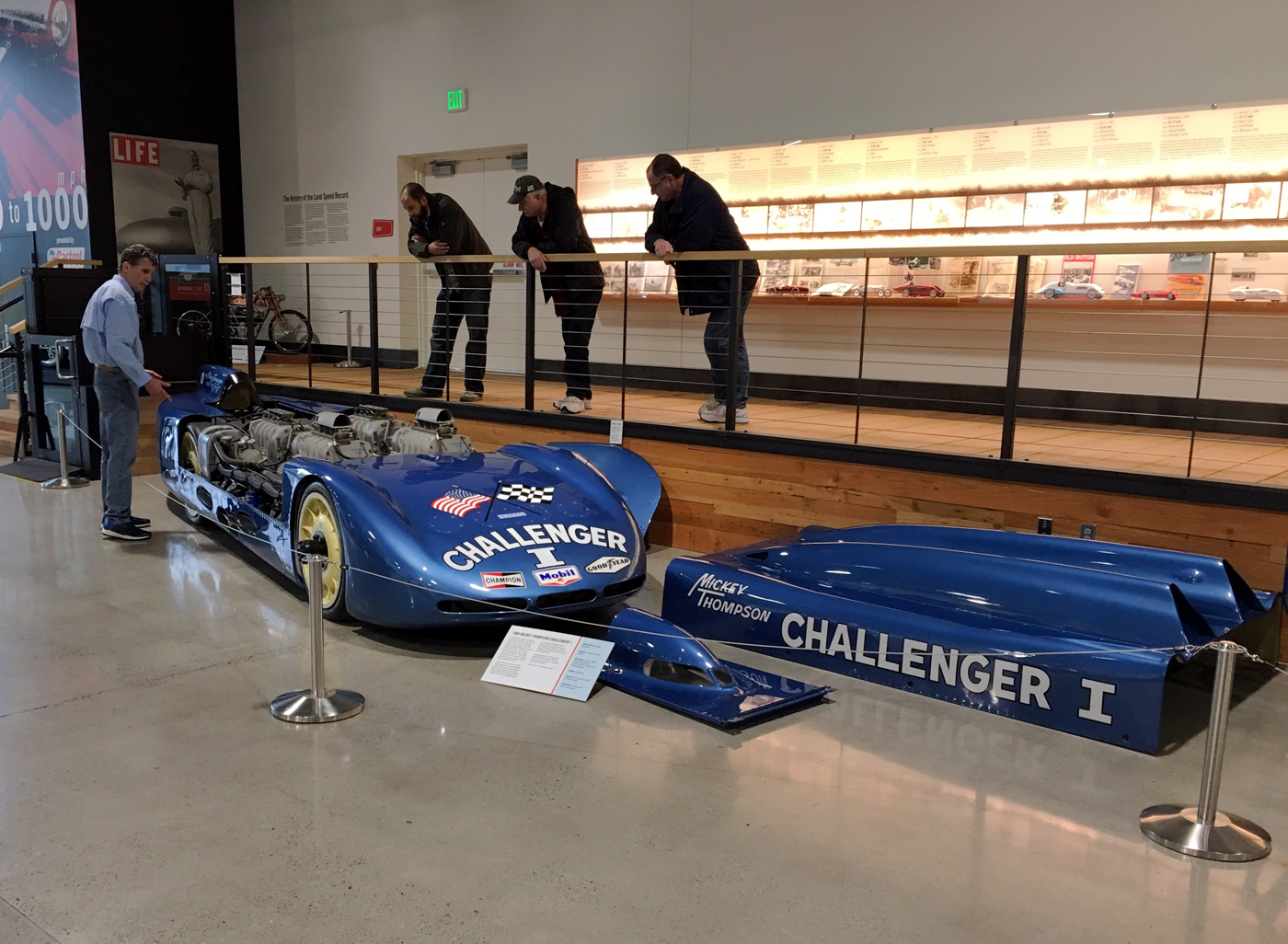
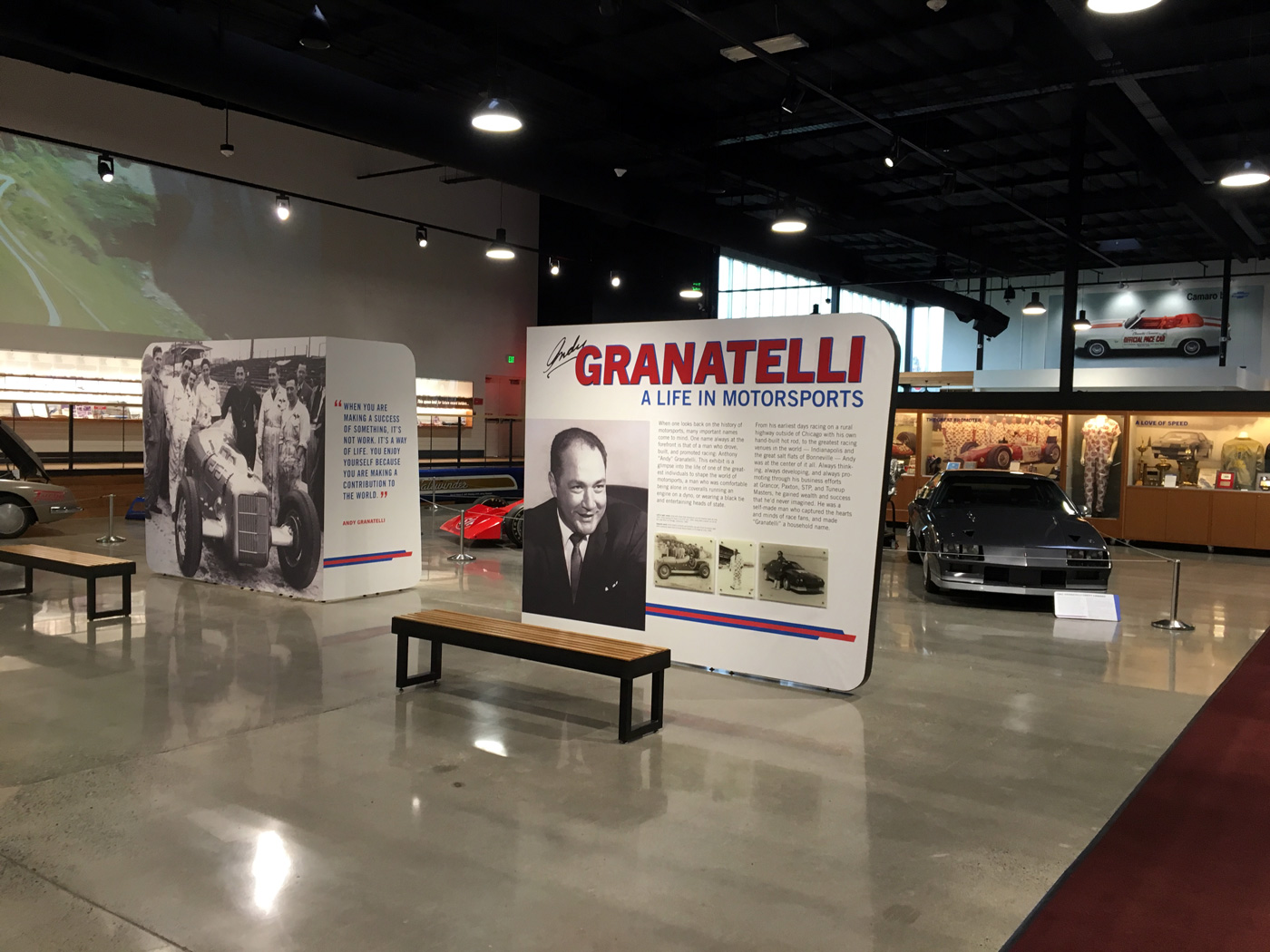
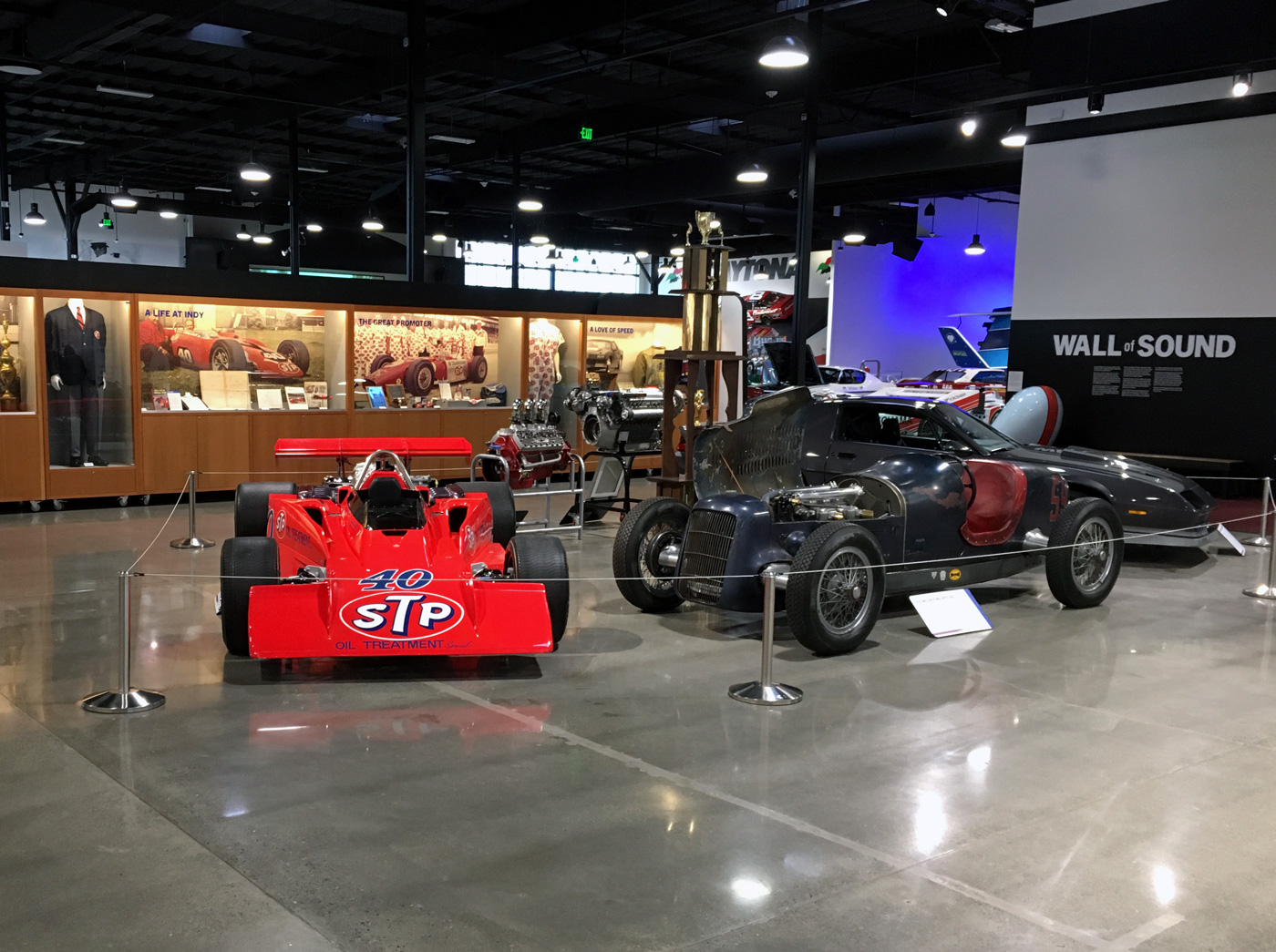
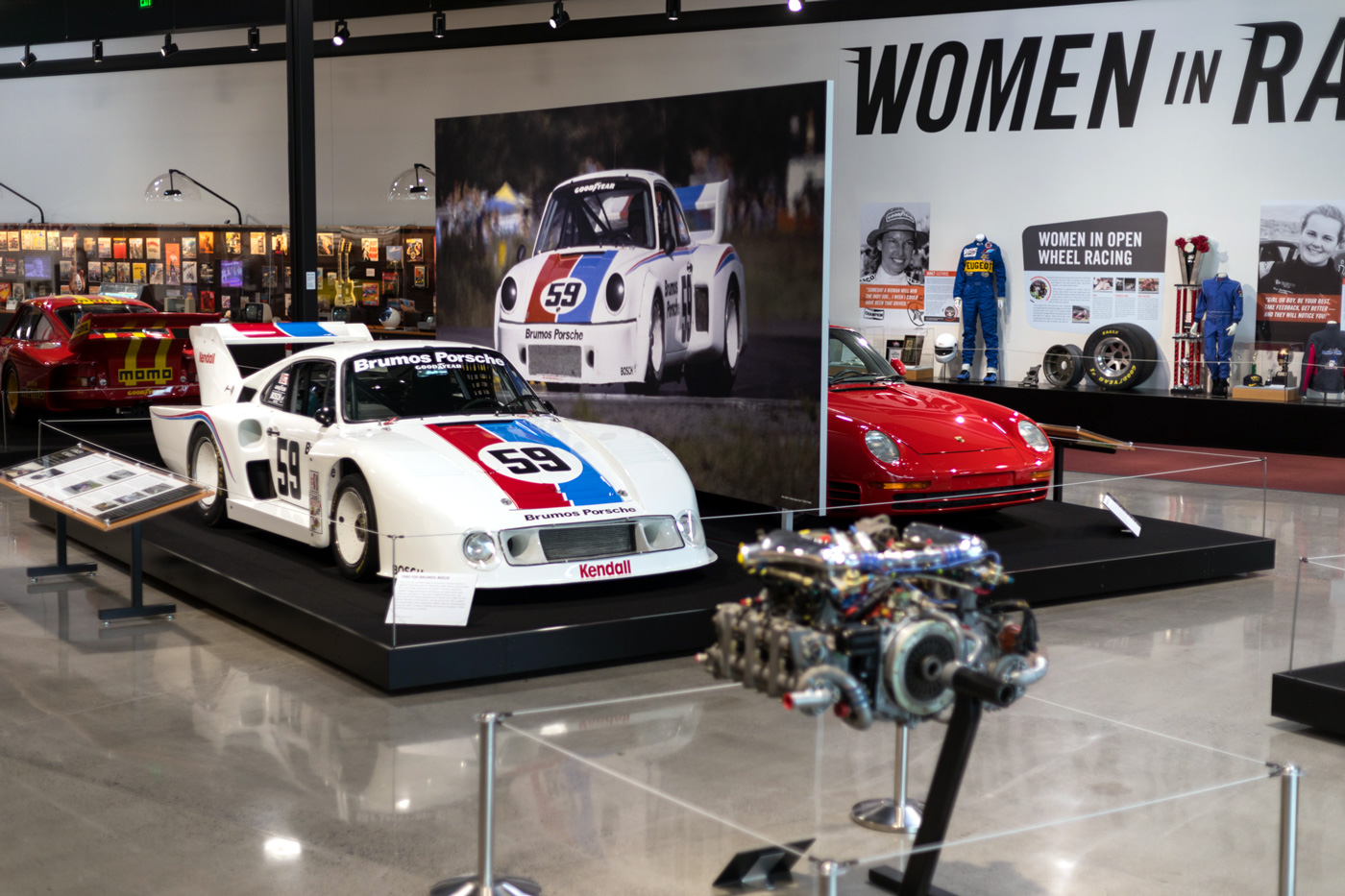
Great news, I had no idea this museum existed! Will definitely take a trek over there at the end of snow season.
Thanks! This museum looks great, hopefully I’ll be able to get there some time. Never imagined that it would be possible to get close to Mickey Thompson’s Challenger.
> … Portland International Raceway. … the only racetrack that is managed by the Parks Department of a major U.S. city.
I’m curious about this statement, for example the Milwaukee Mile is part of Wisconsin State Fair Park, managed (I believe) by the state–almost, but not quite the same as managed by a city.
Brandes,
Wonderful article. And to the Bany family and everyone, (and yes everyone) great job.
I am exhausted just thinking about all that work.
Congratulations and continued success.
That place must be massive. If I am in the area, I will definitely stop by.
Great stuff.
Brandes,
What at a wonderful article! I will have to add it to a list of must sees.
The museum recently added Danny Thompson’s Challenger II streamliner as well.